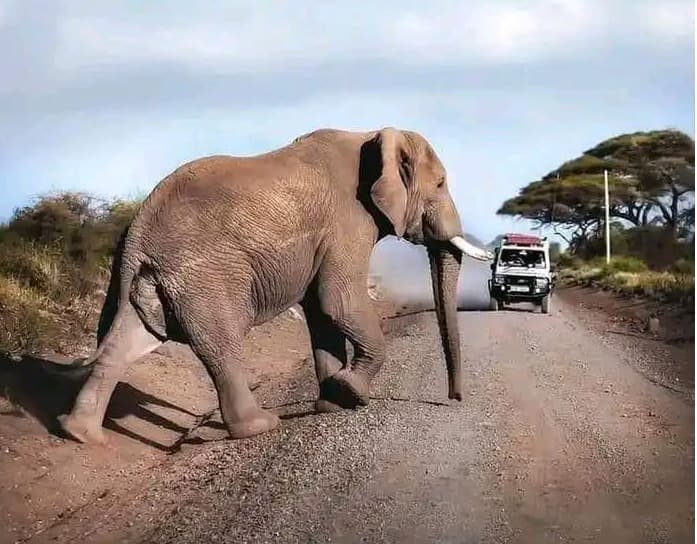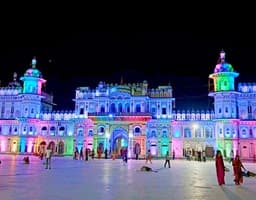Table of Contents
Nepal is not just famous for Mountains but it is one of the most rated natural heritage sites in the world. If we talk about birds, Nepal is shelter of more than 885 species of birds which is more than 10% of total bird population of the whole world. Birds are really an amazing creature and they attract anyone of us with their shape & size, colors, behaviors and life style. We take their life as a meaning of freedom. Everyone wants to fly and live like a bird at least once in his/her life. The bird watching tourism is increasing in numbers every year. Awareness programs in order to protect them well also have grown up in recent years but numbers of rare species of birds are decreasing every day. There are 42 globally threatened species of birds in Nepal and about 165 species of birds are nationally threatened species out of 885 species of birds, available in Nepal.
%20in%20godabari%20pic%20by%20yaju%20shrestha.jpg)
Bird in Godavari Botanical Garden
Bird watching in Nepal is another enjoyable tourism attraction for the tourists. Bird watching in Nepal is not just a bird watching by binocular siting on the jeep or so on but it is also a precious opportunity for the traveler for all jungle activities, water activities in the Lake and Rivers, Hiking in the hills, live like a local in the villages Etc. which let you to watch birds along with other activities.
The Himalayan Monal (Lophophorus impejanus) also known as Impeyen Pheasant or Danphe in local Nepali language is the national bird of Nepal. Spiny Babbler (Scientific name: Turdoides nipalensis), Kande Bhyakur in local Nepali language is a rare species of the bird which is believed to be found only in Nepal. All 12 national parks, 6 conservation areas, 1 wildlife reserve and all rivers along with lakes are the home of birds where you can watch birds, but here I am writing in a short intro about major Best Places of Nepal where you can watch birds, yes, off course directly by your eyes!
Koshi Tappu Wildlife Reserve
Koshi Tappu Wildlife Reserve, Established in 1987, is situated in the eastern Nepal, covering 3 districts, Sunsari, & Udayapur of State – 1 and Saptari of State – 2. The area is mainly wetland, suitable for many species of the birds where around 485 species of the birds are living. Koshi River, Nandan pond, Indian camp pond and Kamaldaha pond are the major places for bird watching in the reserve.
Notable among the 485 bird species are watercock, Indian nightjar, dusky eagleowl, black-headed cuckooshrike, whitetailed stonechat, striated grassbird, large adjutant stork, Pallas’s fish eagle, common golden-eye, gullbilled tern, Swamp francolin, rufous-vented grass babbler, Bengal floricans etc.
Getting Koshi Tappu from Kathmandu
Option A: A 35 minute fly to Biratnagar and about 1 hour drive by a car will take you to Koshi Tappu from Kathmandu.
Option B: A 35 minute fly to Rajbiraj and about 1 hour drive by a car will take you to Koshi Tappu from Kathmandu.
Option C: You can reach by regular bus in 14-16 hours from Kathmandu.
Option D: it will take around 6-7 hours to reach Koshi Tappu by a private car from Kathmandu.
Read More: Koshi Tappu Wildlife Reserve Tour, 15 Days Bird Watching Tour in Nepal
Chitwan National Park
The first national park of Nepal, Chitwan National Park, established in 1973, is located in south of Central Nepal. It covers an area of 952.63 km2 of 4 districts- Chitwan, Nawalpur, Parsa and Makwanpur. Chitwan National Park is home of more than 549 species of birds. Narayani River, Rapti River, Bish Hazari Lake, Greenery forests are the main birding destinations in Chitwan national park. There are around 160 species of migrating birds such as greater spotted eagle, eastern imperial eagle and Pallas's fish-eagle. Some birds just stay few days in Chitwan National Park for the rest and fly to other destinations in February. They arrive in the winter from as far as Siberia. When season changes, few species of migrating birds fly back to their home and another species of birds arrive. It continues throughout all seasons of year.
Chitwan National Park is one of the best places in the world to observe and study about many species of the birds including rare species of the birds. The national park is also home to endangered one-horned rhino and Bengal tiger. Bengal Florican, Grey-crowned Prinia Prinia cinereocapilla and Slender-billed Babbler Turdoides longirostris, brahminy ducks, Bengal pittas , paradise flycatcher are available in the park.
Getting Chitwan National Park from Kathmandu
Option A: A regular 25 minute fly to Bhadrapur and 30 minute drive by a car will take you to Chitwan national Park from Kathmandu.
Option B: Tourist bus from Tourist Bus Park, Nayabazar near Shepherd Holidays’ office takes around 5-6 hours to reach Saurah, Chitwan from Kathmandu.
Option C: Regular local buses operate services from Gongabu Bus Park, and take 6-7 hours to reach Chitwan from Kathmandu.
Bardiya National Park
in Bardiya district, Pradesh No. 5, at Mid-Western part of Nepal, bordering with the eastern bank of Karnali River in the west, the longest river of Nepal, Bardia National Park is the largest national park of Nepal, it covers 968 km2 alone and total protected area of 1,437 km2 together with the neighboring Banke National Park. It was established in 1988 as Royal Bardia National Park. Though, it is located in Terai region of Nepal, very easy to reach by any means of transportation available in Nepal, unlike Chitwan National Park, it is less disturbed or undisturbed national park in Nepal where very less tourists make their way due to no proper marketing.
Bardiya National Park is home of Nepal’s famous One-Horned Rhino & Royal Bengal Tiger. Both are listed as an endangered wildlife. Talking about birds, it is also a home of more than 540 species of birds including endangered species like Lesser Florican, Bengal florican, Silver-eared Mesia, Sarus Crane, white-rumped vulture, jungle prinia, golden-headed cisticola, and many more.
Bank of the Karnali river, Babai river, Badhaiya lake, Satkhalauwa lake are the main places for bird watching in the protected area.
Getting Bardiya National Park from Kathmandu
Option A: A regular 1 hour fly to Nepalganj and 2-3 hours’ drive by private car will take you to Bardiya national Park from Kathmandu.
Option B: Private car will take around 12-14 hours to reach to Bardiya National Park directly from your Hotel in Kathmandu.
Option C: A regular day bus or night bus from Kathmandu new bus park, about 15 hours’ drive, will take you to Nepalgunj and another 3-4 hours’ local bus will exactly take you to Thakudwar, the main entrance of Bardiya National Park.
Shuklaphanta National Park
Shuklaphanta National Park is located in southern part of Sudurpashchim Pradesh, far west Nepal boarding with India, the park covers an area of 305 km2. Initially, it was a hunting spot of Royal family of Nepal and was known as Royal Hunting Reserve. The Indian Tiger Reserve Kishanpur Wildlife Sanctuary is neighboring in the south.
More than 450 species of birds are found in Shuklaphanta National Park. Several endangered species like the Lesser Adjutant, Bengal Florican, White-rumped Vulture, Sarus Crane and Finn’s Weaver are spotted in the park along with Swamp Francolin, Jerdon's Bushchat, Jerdon's Babbler, Yellow-eyed babbler, Dusky eagle owl, White-naped woodpecker, White-rumped vulture, Slender-billed vulture, White-capped water redstart, Rufous-gorgeted flycatcher and many others.
Getting Shuklaphanta National Park from Kathmandu
A: Fly to Dhangadhi, it will take about 1 hour and then drive to Shuklaphanta by a car which will take around 1.30 hours.
Option B: Fly to Surkhet from Kathmandu airport (1:05 Hr) and drive to Shuklaphanta National Park (2.30 hr drive) by a car will take you to the spot.
Option C: Regular local bus will take 6-7 hours to reach Krishna Nagar then another 7 hours from Krishnanagar to Shuklaphanta, there are 2 stops where you should change the local bus/jeep to reach to your destination. Else, you can go directly by a private car/jeep to Shuklaphanta National Park.
Taudaha and other areas of Kathmandu valley
Kathmandu Valley is surrounded by hills and Rivers, Streams, National Park, Godavari Botanical Garden, Community Forests, Ponds are the main reason that Kathmandu valley is also a hub to watch the birds. Kathmandu valley is one of the oldest civilizations of Nepal it may have been inhabited as early as 300 BCE. Shivapuri Nagarjun National Park, Phulchoki, Nagarujun Forest, Dakshinkali, Bhandarkhal, Ranibari, Sleshmantak, Godavari, Gokarna, Chameli, Chakhandol, Mech Danda and other many small community forests, Bagmati, Bishnumati, Manohara, Dhobikhola, Hanumante, Tukucha, Godavari, Manamati, Nakhkhu Khola, Balkhu Khola, Mahadev Khola are some names of rivers and streams of Kathmandu valley, Taudaha, Bais Dhara, Nag Pokhari, Gahana Pokhari, Pimbahal Pukhu, Khokana Pokharai, Kamal Pokhari, Diya Pukhu are few name of the ponds in Kathmandu valley, these are the home of many birds.

Taaudaha Pond along with Nagarjun, Godavari and Phulchowki hills are main attraction among all areas where birds are available in Kathmandu valley. Taudaha is very famous for migrated birds. Spiny babbler, great cormorant, common coot, minivets, woodpeckers, flycatchers, long-tailed broadbill and racket-tailed drongo are the major unique bird species found in the area.



